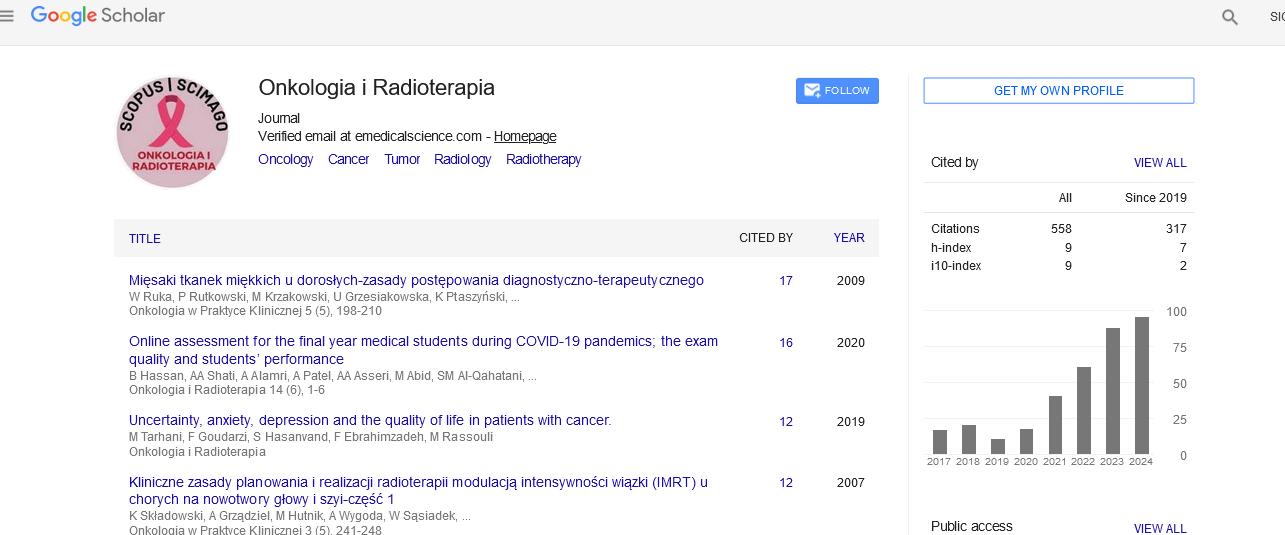Rola radioterapii w leczeniu nowotworów wątroby
Abstract
Author(s): Izabela Kordzià Âska-Cisek, Anna Brzozowska, Paweà  Cisek, Jolanta Kijek, Maria Mazurkiewicz
The liver is a common site for both primary and secondary tumors. The mainstay of treatment in most of these neoplasms is surgery. Non-surgical treatment methods include: RFA (radiofrequency ablation), TARE (transarterial radioembolization), TACE (transarterial chemoembolization) as well as cryo- , laser and radiation therapy. Due to its parallel structure, the hepatic parenchyma tolerates high doses of radiation in small volumes. This allows the usage of various methods of conformal radiation therapy. Most often, it is 3D-CRT and stereotaxy. Proton radiation and the usage of carbon ions also yield very good outcomes. The role of brachytherapy in the treatment of hepatic neoplasms is marginal. However, it can be particularly useful in the case of single large hepatic lesions.
<Share this article


Editors List
-
RAOUi Yasser
Senior Medical Physicist
-
Ahmed Hussien Alshewered
University of Basrah College of Medicine, Iraq
-
Sudhakar Tummala
Department of Electronics and Communication Engineering SRM University – AP, Andhra Pradesh
-
Alphonse Laya
Supervisor of Biochemistry Lab and PhD. students of Faculty of Science, Department of Chemistry and Department of Chemis
-
Fava Maria Giovanna
Google Scholar citation report
Citations : 558
Onkologia i Radioterapia received 558 citations as per Google Scholar report
Onkologia i Radioterapia peer review process verified at publons
Indexed In
- Directory of Open Access Journals
- Scimago
- SCOPUS
- EBSCO A-Z
- MIAR
- Euro Pub
- Google Scholar
- Medical Project Poland
- PUBMED
- Cancer Index
- Gdansk University of Technology, Ministry Points 20

